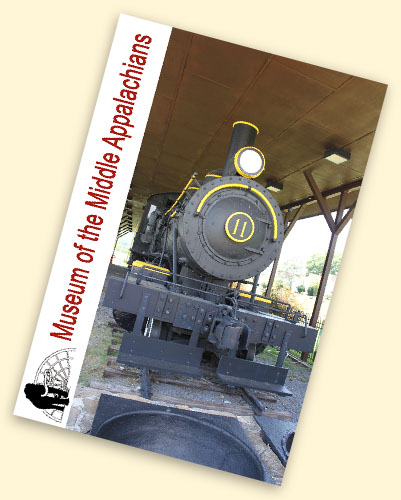

The Museum of the Middle Appalachians, located on Salt Trail in Saltville, VA, is dedicated to relating the history of the local area, including its unique geology and how it has influenced the area for millions of years, the Ice Age, Civil War and Native Americans. Visitors can see the site of annual archaeological and paleontological digs, artefacts and fossils that have been recovered locally, as well as evidence of two Civil War battles and Saltville's over seventy year history as a company town.
The museum is also responsible for curation and maintenance of two historic steam locomotives and a caboose.

This G Class Consolidation type (2-8-0)
locomotive was built at the Roanoke Machine Works in Roanoke, VA, in 1892 for the Norfolk & Western as #305. In 1922, it was sold to the Mathieson Alkali Works where it was renumbered #11 and worked for the rest of its operating life there. It was donated to the Town of Saltville in 1970 and is the oldest surviving N&W steam locomotive.
Weighing 120,565, 106,780 lbs on its 50” drivers, #11 has a 22’ engine wheelbase and 14’ 6” driver wheelbase.

This engine was originally built as an 0-4-0T
(Tank) locomotive in 1894 by the Rhode Island Locomotive Works in Providence, Rhode Island.
It spent its entire working life as #2 at the Mathieson Alkali Works in Saltville, VA, but was converted to an 0-6-0T at Norfolk & Western’s Roanoke Shops in 1935. At some point, it was renumbered #5.
The engine has 44” drivers and 16” x 24” cylinders. Operating at a boiler pressure of 150 psi, it delivered 17,800 lbs tractive effort. It was donated to the Town of Saltville in 1970.


Mathieson Alkali Works was founded in 1892 by Neil Mathieson, a British soda ash and bleaching powder merchant, to take advantage of natural salt deposits in Saltville. The firm extracted brine from the salt pits and converted it to several commercial products, of which bleaching powder was the main one.
The company owned most of the land and homes in the town. It operated the utilities and paid the salaries of the police, and supplied much of the community’s needs through its company stores, local hospital and the school system.






























